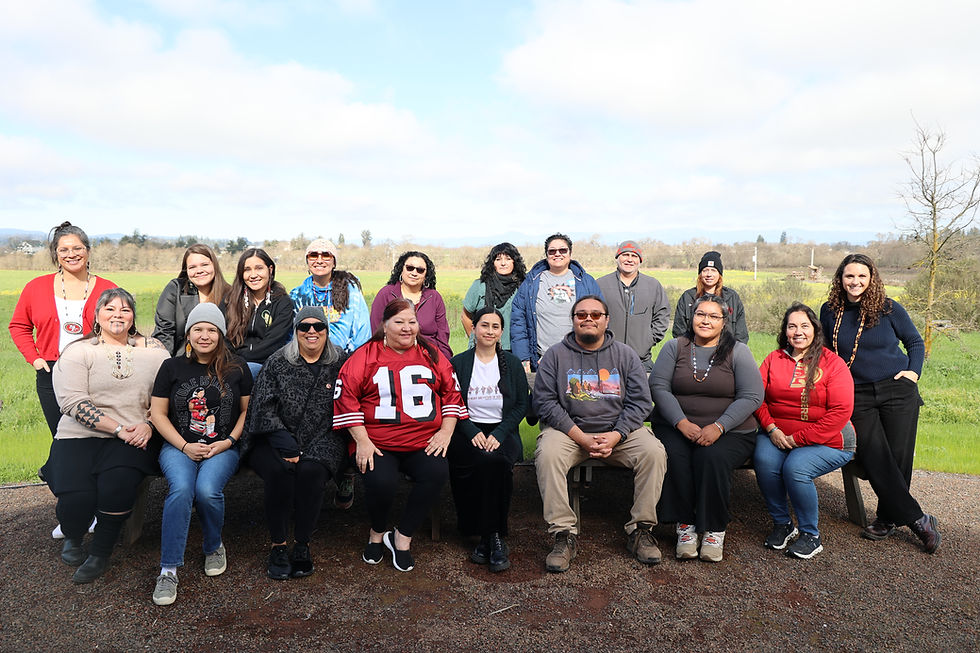Native Curriculum by Native People: Yes, it exists!
- Redbud Resource Group

- Oct 27, 2021
- 2 min read
The news is littered with stories of teacher missteps and stereotypical, outdated representations of Native Americans in school curricula. As a part of California's Truth and Reconciliation process California's government must invest resources into new educational materials that highlight the strengths of Native Americans, and shine light on the violent legacy of American colonialism.
While curriculum specific to California's 110+ Tribal nations will likely take years to fully develop, there are plenty of solid options for educators who want to include authentic Native perspectives, written and approved BY Native peoples.
We've included some examples below. In the comments, please include links to any other curriculum options that already exist!
Here are some examples:
Redbud Resource Group

We offer three curriculum units for free on our website. The first, Healthy Ecosystems Feed Healthy Communities (developed with CIMCC) features Pomo ecology and ecosystem resiliency lessons, followed by six lessons focused on Indigenous foods and food access. These lessons are designed for grades 7+, and can be incorporated into a range of classroom subjects, from ecology to humanities to statistics and biology.
The second unit, Ethnic Studies Support Lessons, introduces students to the basics of Native identity, exploring sovereignty, race and belonging, and relationship to place. Lessons cover myths and assumptions about Native communities, cultural revitalization, and cultural visibility.
Our third unit Acorns All Around Us is designed for early childhood education settings, and introduces students to California Indigenous foods and values.
The California Indian Museum and Cultural Center (CIMCC) has a number of high quality educational materials on their website that can be used in K-12 classroom settings. Their STEM Maker lessons include robotics and weaving activities, while their CA Mission materials feature guided tours of CA missions from the Native perspective. Their Seven Essential Understandings provide guideposts to educators who are unsure of the kind of Native knowledge they should incorporate into their classrooms.
The National Museum of the American Indian's Native Knowledge 360 program features hundred of high quality lessons for students K-12, covering a range of topics from stereotypes to Native science. Their lessons expand beyond just the Native American experience in the U.S. to include Indigenous perspectives from Latin America as well.

Save California Salmon works with Tribes across California to bring awareness to issues around water rights, ecosystem health, and Tribal sovereignty. Their Advocacy and Water Protection Curriculum helps high school students develop skills needed to advocate for the environment and for Native communities.

Developed by the Indian Land Tenure Foundation, Lessons of Our Land has lessons for grades K-12, that span regions and Tribal nations. Their lessons are great for exploring Indigenous worldview, relationship to place, basic political concepts, and Native scientific knowledge.

Run by the Winnemem Wintu Tribe, Run4Salmon is a non profit focused on water rights and protection. Their work highlights the inseparable relationship California's Native people have to the land, water, plants, and animals within our shared ecosystem. Their Run4Salmon curriculum, designed for elementary school, is accessible, interactive, and full of Winnemem Wintu perspective.







Oregon:
Indian Education Resources
- Collection of sources including educator resources and student/parent resources
o Among the educator resources are links to “Native American Education Pedagogy Websites” (BROADLY APPLICABLE), Oregon-specific curriculum (including information regarding Senate Bill 13 – Tribal History/Shared History), and tribal-specific newspapers and magazines.
o Indians in Oregon Today (2004, revised in 2014)
§ Middle School – High School curriculum
§ 2014 revision produced by Instruction, Standards, Assessment and Accountability Unit and Equity Unit, Office of Learning, Oregon Dept. of Ed. (ODE)
o Senate Bill 13: Tribal History/Shared History (2017)
§ Law directs the ODE To create K-12 NA curriculum for inclusion in OR public schools and provide professional development to educators. The law also directs the OD…
Wisconsin First Nations Education
- This resource includes a rich collection of educational videos, teacher professional development resources, lesson plans for all grades, and learning tools for classrooms and libraries. It is intended to support Wisconsin Act 31 (1989), which requires instruction in the history, culture, and tribal sovereignty of the eleven federally recognized Tribal Nations and communities in Wisconsin public school districts.
- In the resource depository, educators are encouraged to teach about the Native Nations that reside closest to the school rather than trying to teach about all the Nations at once (WI specific). A map is provided to assist this process. Then, educators may filter by grade level, from PK-12 with additional educator resources available. Some re…
Washington:
Since Time Immemorial: Tribal Sovereignty in Washington State
- State Legislature passed SB 5433 (2015), modifying the original 2005 legislation, now requiring the Since Time Immemorial or other tribally developed curricula be taught in all schools. The use of the Since Time Immemorial curriculum has been endorsed by all 29 federally recognized tribes in the state.
- The curriculum is broken down into several categories from Early Learning to High School and the list of resources includes videos and implementation resources. While some of the curriculum is Washington-specific, other portions may be broadly applicable. In addition to the links provided below, the home page linked above provides “Ready to Go Lessons” for Elementary, Middle School, High School, …